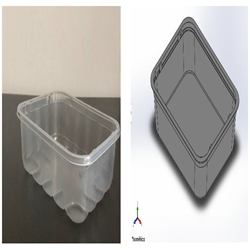A commodity and an economic crop of Malaysia, the oil palm has now faced the threat of a devastating disease, which is mainly caused by the pathogenic fungus, Ganoderma boninense. This pathogenic fungus leads to the most destructive disease, the basal stem root (BSR) disease. As a result, Malaysia suffers billions of Ringgit loses every year due to this disease. Therefore, extensive research on the preventive and curative treatment of BSR disease is crucial. Nanoscience and nanotechnology have been proven to provide novel and improved solutions in the agricultural sector.
In this study, three systems of chitosan-based agronanofungicides were synthesized for the development of potent antifungal agents, namely, a single-loaded hexaconazole system (chitosan-hexaconazole nanoparticles, CHEN), a single-loaded dazomet (chitosan-dazomet nanoparticles, CDEN), and a double-loaded hexaconazole and dazomet system (chitosan-hexaconazole-dazomet nanoparticle, CHDEN). The loading content, encapsulation efficiency, and the release profile of the fungicide encapsulated in the chitosan-based agronanofungicides were evaluated. The effect of the crosslinking agent, sodium tripolyphosphate (TPP) on the size of each of the synthesized nanoparticles was studied and revealed that the increase of the TPP concentration has resulted in the smaller particle size. Besides, both in vitro and in vivo studies have proved that the size of the nanoparticles plays a crucial role in controlling and suppressing the BSR disease. The synergistic effect of the double-loaded system of CHDEN in combating the disease has also been observed in both in vitro and in vivo studies.
The synthesized CHDEN at 20 mg/mL TPP with a mean diameter size of 5.3 nm have shown the highest antifungal potency with half-maximal effective concentration (EC50) at 3.5ng/mL and disease reduction of 75%, compared to the untreated infected seedlings. While CHEN and CDEN prepared at 20 mg/mL TPP with a mean diameter size of 18.1 and 6.7 nm, respectively, have shown EC50 at 80 ng/nL, respectively, with disease reduction of 61% and 58%, respectively. This shows that the formulated agronanofungicide systems are able to enhance the efficient delivery of active ingredient to the target site, able to sustain it in an extended time, and consequently, improved fungicide efficacy in combating the BSR disease in oil palm.
Moreover, phytotoxicity, cytotoxicity, and genotoxicity studies revealed the importance of chitosan nanoparticles where the chitosan is acted as a protective wall to shield the toxic effect of fungicide on oil palm seedling, cells and DNA. The chitosan-based agronanofungicides were seen to greatly reduce the phytotoxic effect compared to the pure and conventional fungicides with V79-4 hamster lung cells did not reveal cytotoxicity or genotoxicity, potentially suggesting that encapsulation with chitosan reduces direct toxicity of the toxic fungicides. Meanwhile, pure fungicide revealed its high cytotoxicity effect on V79-4 hamster lung cells. In addition, dermal exposure assessment on rabbits revealed that chitosan-hexaconazole nanoparticles are classified under corrosive subcategory 1C, while chitosan-dazomet nanoparticles are classified under corrosive subcategory 1B. Moreover, both chitosan-hexaconazole nanoparticles and chitosan-dazomet nanoparticles are classified as causing mild irritation. Therefore, indicating that necessary precautions must be taken while handling the chemicals.
The residual analysis of chitosan-based agronanofungicides on the oil palm stem tissue, leaf, and palm oil matrices has also been carried out. No fungicide residue was observed in the palm oil matrices, indicating that it is safe to be used in oil palm cultivation. Moreover, the half-lives (t1/2) of fungicide in the stem tissue and leaf was found to be 383 and 515 days, respectively, which indicates the higher uptake and retention of chitosan-based agronanofungicide compared to the conventional counterpart, hence, showing the ideal desired properties for the chitosan-based agronanofungicides for better managementof BSR disease of oil palm.
Therefore, the newly developed chitosan-based agronanofungicides offer high antifungal activity, controlled release properties, prolonged circulation time, no phytotoxicity (on oil seedling), low cytotoxicity (on 3T3 mouse fibroblast cells and V79-4 hamster lung cells), no genotoxicity (on V79-4 hamster lung cells), and residue-free. In other words, it offers excellent potential as a sustainable alternative in the development of integrated management in combating fungal pathogens in crops, particularly oil palm.
*Abstract of the thesis (PhD) by Farhatun Najat Maluin.
For further information please contact:
Nor Azah Yusof, PhD
azahy@upm.edu.my
Date of Input: 31/07/2023 | Updated: 31/07/2023 | roslina_ar
MEDIA SHARING























